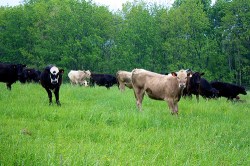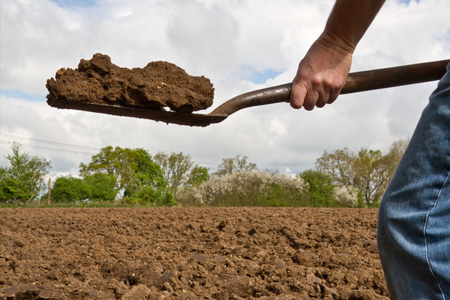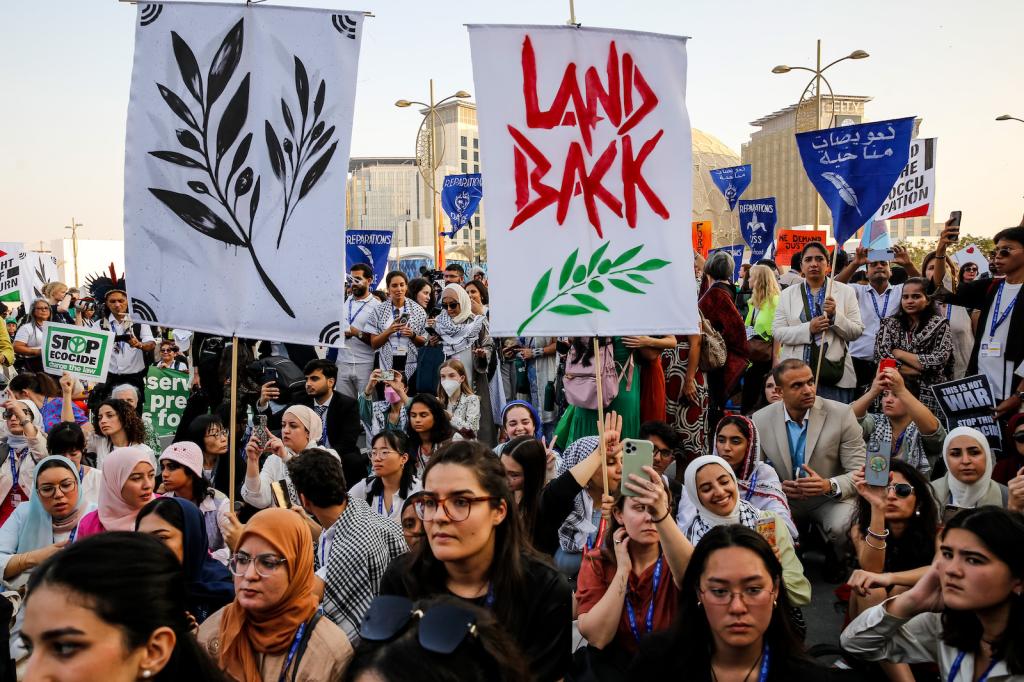
Amber KarnesWhen animals are grazed intensively (moved from one small area to the next in rotation), they’re believed to help the soil absorb CO2.
It sounds too good to be true, but a groundbreaking bill passed in California last week that promises to do two important things at once: boost sustainable farming in the nation’s biggest agricultural state and reduce greenhouse gas emissions.
You see, the Golden State is revving up to start its own carbon market (or “cap-and-trade” plan) and it kicks off next month. This plan is designed to cut greenhouse gas emissions 80 percent by 2050 and will require power plants and large industrial facilities like oil refineries and manufacturers (and eventually fuel and natural gas distributors), to participate in a process of paying for their pollution (or, in some cases, selling credits they earn by not polluting).
This cap and trade program will result in new public funds that can be invested in activities that further reduce greenhouse gas emissions. In fact, as the state’s public radio affiliate KQED reports, revenues “are expected to reach into the billions of dollars by the end of next year.” And the bill that passed last week — AB 1532 — dictates what kinds of activities those dollars can be spent on. But here’s the coolest part: Sustainable and organic farming practices made the list!
In other words, giant polluting factory are going to have to buy a portion of their permits to pollute from the state, and that money might actually go to help farmers do things like build their soil, plant cover crops, manage their grazing practices to sequester carbon, and save water and energy. In other words, the kind of farming that needs all the help it can get in our otherwise overly industrialized system.
Scientists are still hammering out exactly which farming practices are the best for the climate, but there are promising signs that healthy, well-managed soil and pasture can go a long way toward balancing out and, in many cases, actually absorbing the CO2 in the atmosphere.
The Rodale Institute’s 23-year comparison study of conventional and organic farming systems, for instance, has shown that organic grain production systems increase soil carbon 15 to 28 percent. And many other studies are in the works — like the Marin Carbon Project, which is researching the value of closely managed, intensively grazed pasture as a carbon sink.
And then there’s the fact that farmland is disappearing altogether and being replaced by urban sprawl (read: cars, industry, and other polluters). A recent study out of the University of California at Davis found that there are 70 times more GHG emissions associated with urban land than farmland (and this even applies to land that has been conventionally farmed).
It makes sense, then, that the California Climate and Agriculture Network (CalCAN), the coalition of sustainable agriculture groups that lobbied hard for the inclusion of agriculture in the bill, is envisioning a system that provides revenue to sustainable farmers directly (through grants and a cost-sharing program), but also participatory research and farmland preservation.
Of course, because the language in the bill is somewhat vague (it simply calls for the “development and implementation of sustainable agriculture”), there’s also always the possibility that the money could get tied up in the current battle over what exactly “sustainable” means (after all, the biotech seed giant Monsanto uses that exact term to market its seeds).
As Renata Brillinger, CalCAN’s executive director, sees it, that risk underscores the need “to develop science-based criteria for what sustainable agriculture means.”
She also points to the fact that the farms that use multiple sustainable practices tend to have the smallest climate impacts overall. ”A lot of the science takes a farming practice or two in isolation,” she says, “but studies that look at whole systems — multiple practices in combination — are showing great benefits in terms of reducing GHG emissions, sequestering carbon, and providing more resilience for the farm as well.”
In the meantime, some farmers are hopeful.
For Rose Marie Burroughs of Burroughs Farms, an organic, multi-generational dairy farm, the possibility of a grant that might offset the cost of the operation is really promising.
“Long ago, when we started implementing management-intensive grazing with our beef cattle, we saw the value of a symbiotic relationship between the cows and the land,” she says.
Burroughs doesn’t know what kind of carbon her family’s pastures may be sequestering, but she says she’d jump at the chance to find out if and when California’s cap-and-trade dollars fund the research. She’s also used ground cover and open space on the farm to capture rain water that has replenished their aquifers — another important step that could protect the Burroughs from climate-related disaster.
“We’ve had record highs [in California] this week,” she says. “More and more people are experiencing climate change on a day-to-day basis and we have to be able to use our water the best we can. I hope these farming and grazing practices can help us through these turbulent times.”




